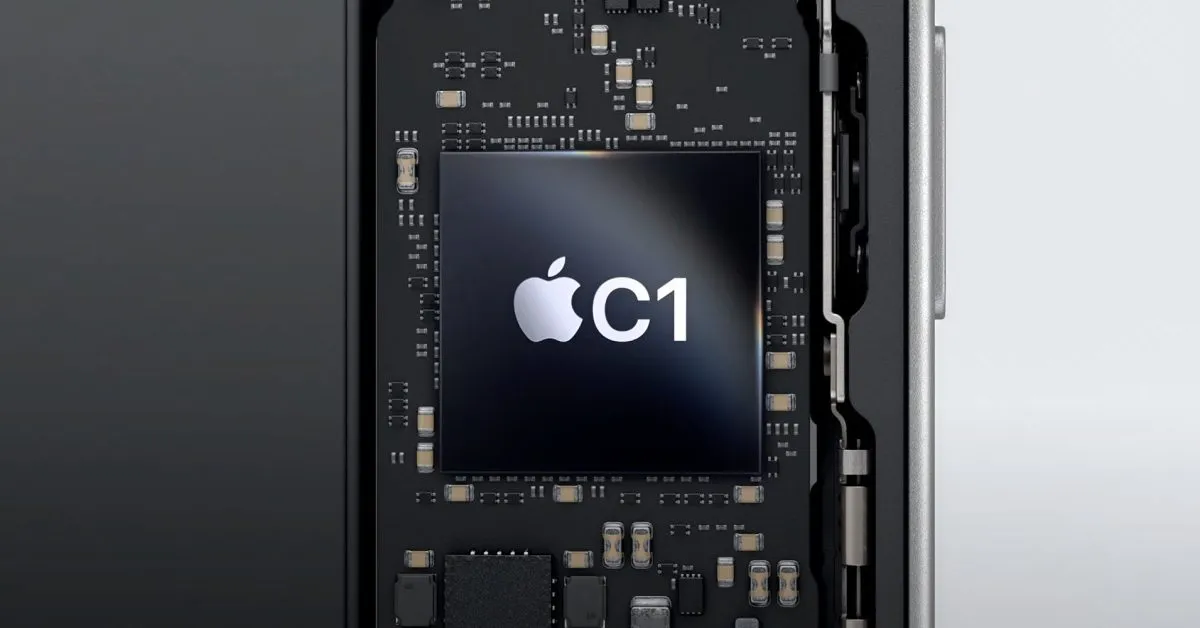
Apple's latest iPhone release features a groundbreaking component that has been in development for many years: the C1 modem. While the concept of a new modem might not initially seem thrilling, the impact of the C1 is already evident in its first iteration. Apple has invested significant time in this development, resulting in both cost savings from moving away from Qualcomm and notable improvements for users. Here are two standout features enabled by Apple's new C1 modem.
Who doesn't appreciate extended battery life for their devices? Even though the iPhone 16 Pro has achieved an impressive battery life, a little extra power is always welcome. During the iPhone 16e presentation, Apple didn't overly emphasize the C1, but it highlighted its key benefits:
The C1 modem is Apple's first in-house designed modem, touted as the most power-efficient modem ever incorporated in an iPhone. It provides fast and reliable 5G cellular connectivity. The combination of Apple silicon, including the C1, a completely new internal design, and the advanced power management of iOS 18, all contribute to exceptional battery life.
For those frequently using 5G away from Wi-Fi, you know the significant battery drain that cellular data can cause. However, the C1's improved power efficiency addresses this issue effectively.
In fact, the C1 enables the iPhone 16e to surpass the more expensive iPhone 16 in terms of battery life, with nearly 20% better performance. This advancement will also allow the upcoming iPhone 17 Air to achieve an ultra-thin design while maintaining sufficient battery life—a concern for many potential buyers.
It won't be long before C-class modems become standard in more Apple devices, facilitating a blend of better battery life and thinner form factors across various products.
Another significant advantage of the C1 modem is its ability to integrate seamlessly with iOS in a manner that Qualcomm's modem could not. This integration allows the modem to understand the user's current activities on the device, prioritizing crucial data usage.
Apple explained to Reuters how the C1 sets its iPhones apart through tight integration with its processor chips. For instance, when an iPhone encounters congested data networks, the phone’s processor can instruct the modem to prioritize time-sensitive data, enhancing the phone's responsiveness to user needs, according to Arun Mathias, Apple's vice president for wireless software.
When faced with network congestion, Qualcomm's modem cannot determine which data requests are most important, often leading to a frustrating user experience. However, Apple's C1 offers more responsive and intelligent data usage tailored to each user's specific needs.
The introduction of the C1 modem is just the beginning of Apple's innovations in cellular technology. These two improvements alone are promising for the C1's future potential across Apple's product lineup. However, they are only the start.
Reports suggest that Apple is planning a C2 chip for next year and a C3 for 2027, which will offer even more functionality. For the first time, the prospect of new cellular modems in Apple's C-class lineup is genuinely exciting.
What are your thoughts on Apple's C1 features? What advancements do you hope to see in the future? Share your thoughts in the comments below.
Looking for the best accessories for your iPhone? Explore our top picks!